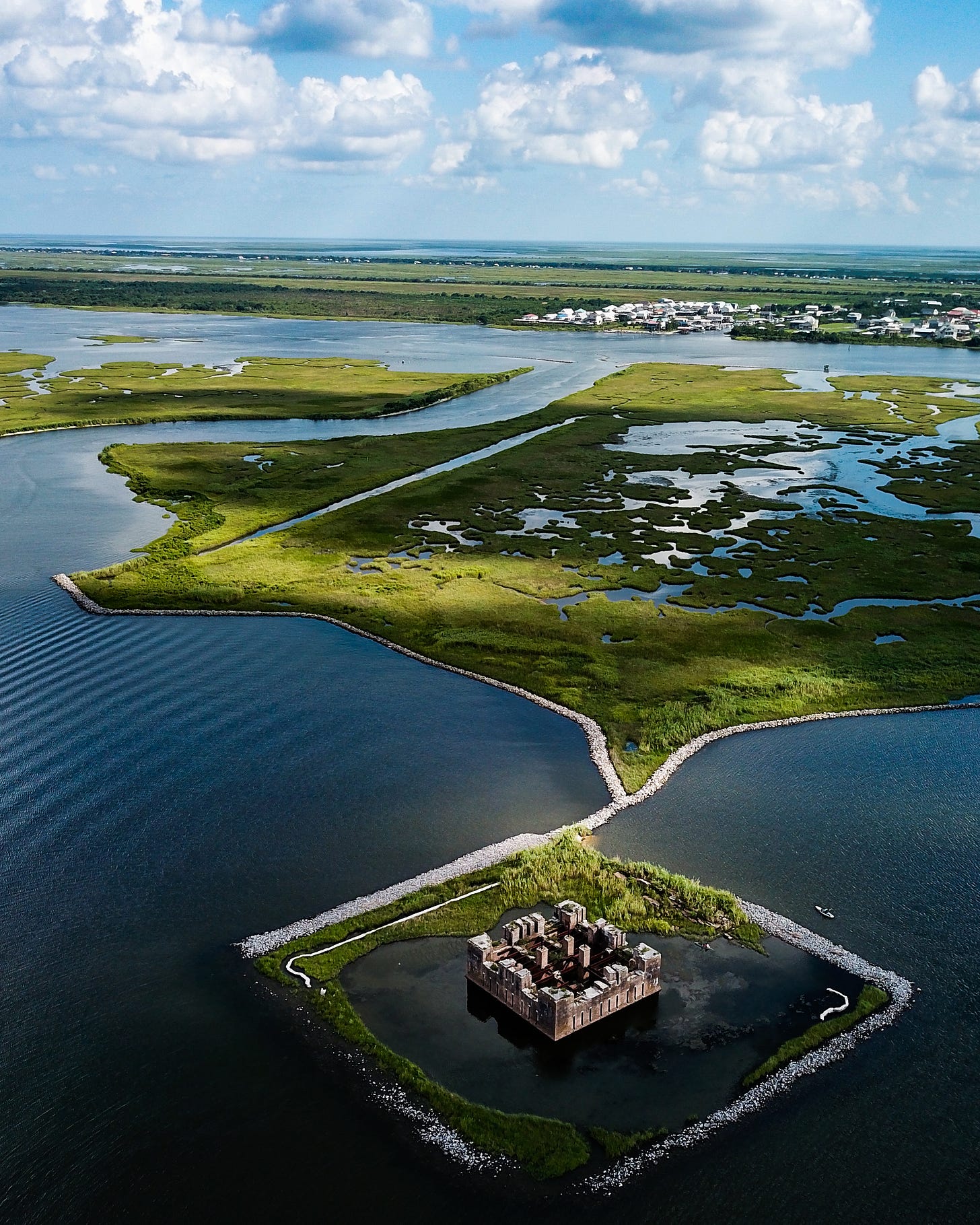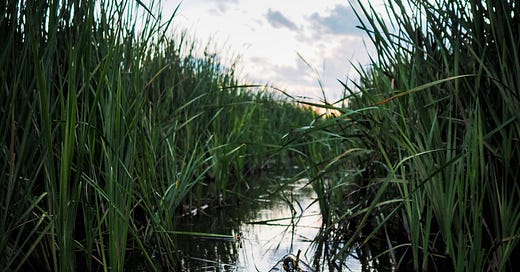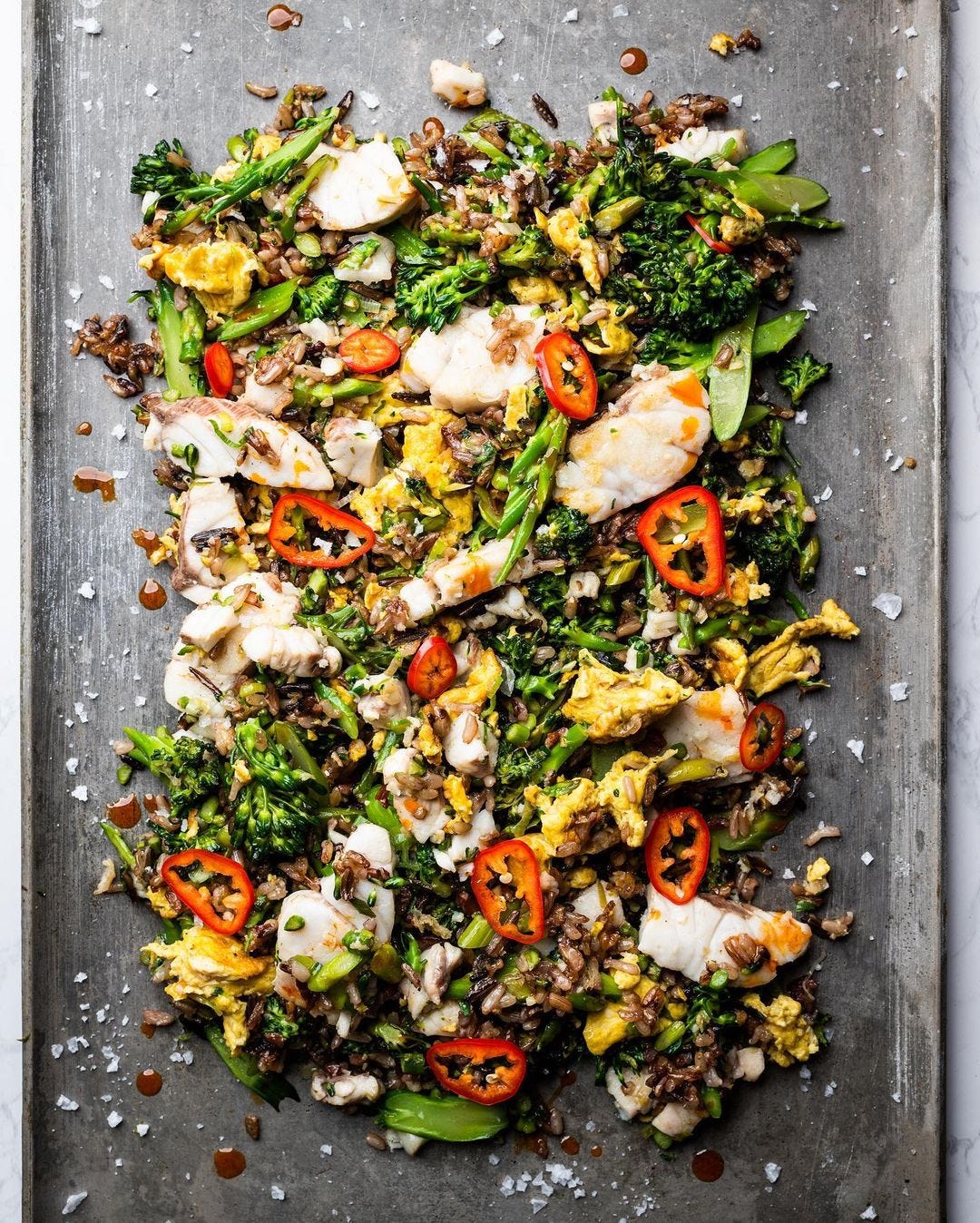Howdy folks,
A couple weeks back, I was sorting through old photo gear and found a small camera I hadn’t used in years. I charged the batteries to see if it’d be good enough to keep in the kayak with me, then discovered that the memory card inside still held some of the first images I had made after moving to NOLA—and more specifically, some of the first I’d made from the water.
These experiences are entwined with the roots I’ve laid here, especially those first feelings of home, and the initial breaths that gave life to a body reborn—one that felt strong and healthy and that no longer vibrated with the recoils of chemo and cancer. They’re also just fun to look back on, and to revisit all the ways I’ve fumbled toward the “sportsman” identity.
We’re changing up the format up this week to relive a couple of memories, and to (hopefully) nudge y’all into connecting to the water here, in your own ways.

The Cajun Sleigh Ride
Let me start by saying that, despite often looking the part, I haven’t always been the outdoorsy type. I spent time in the woods and on the water as a kid, but most of that was in search of connection to my dad and grandfather, void of any sense of sportsmanship. I’ve always appreciated nature, sure, but I spent more time driving through it or watching it on TV than I spent out in the wild, and my curiosity for the outdoors didn’t really start to grow until I lived in NYC—far removed from it. As I write this, I’m realizing that this overlaps with a time of transition for my grandfather, who fished into his late 80s and still hunted into his early 90s, when he reluctantly left his home in Shreveport to live with my dad and stepmom in North Carolina. I suppose it’s no coincidence that my interest grew as I watched his abilities decline.
During my move to NOLA in 2018, I stopped to see the family in North Carolina and asked my dad if I could bring Pop’s old pirogue with me. I had never fished out of it, but at 10 feet long and only about 50 pounds, I figured it’d be worth an attempt, given that I’d soon be surrounded by water. I grabbed rods and a tackle box that hadn’t seen daylight since I was in high school and threw everything in a trailer, on top of the belongings I had brought with me from Brooklyn. I arrived here in early June.
My first adventure was a sunset paddle through Bayou Sauvage’s Madere Marsh. I brought tackle and tried a few casts, but the water was barely deep enough to navigate, and I didn’t even know what I was trying to catch. A buddy suggested trying a spot down the road at high tide, so I Googled what that meant and made a plan. I launched the pirogue from the side of the road in Little Irish Bayou mid-afternoon on a sunny weekday in August.
Less than 50 yards into the journey, I came across a very large gator who, to his credit, seemed disinterested in/disgusted by me, but still managed to double my heart rate as it slowly sank into the canal. I paddled another 100 yards or so and reluctantly started casting.
A few things to note: First, I was using fishing tackle—rods, reels, line, and lures—that had been in storage for more than two decades. Second, I had no idea what species I was targeting, or what anything here would want to eat. Third, pirogues are very minimalist by design, and not built for comfort. I spent a couple hours wandering around the lagoon, exploring every dead end in the adjacent canals, but found nothing. Not a single bite. So I stopped paddling, cracked open a beer, and lit a joint to remind myself that I was out there to relax.
I leaned back, soaking in the fleeting sun, deeply inhaling as my body sunk lower into the boat. I readied for a few more casts before heading back to the car and chucked an old bass lure into the deeps of a canal. I started to reel, then felt something hammer the bait. I set the hook and pulled in a little line, but the fish made a run for it, spinning the boat around as it darted into open water. I couldn’t tell you exactly how long I fought it or how far it drug that little pirogue, but we were both wiped by the time I got it next to the boat. I later learned that this specific experience—the Cajun sleigh ride—is sought after by kayak fishermen down here.
At this point I knew it was a redfish on the line. Pop and I had caught some from a pier once when I was maybe 12 or 13, and he told me then that they’ll always run toward open water when hooked. I could also now see the fish and the noted black dot near the base of the rear fin. Here’s the thing: Pop and I were also catching speckled trout in that memory, and I recalled that one of the two fish had very sharp teeth. Also, measuring 26.5 inches, this fish was much larger than anything I’d caught with him/ ever. The battle to the boat had worn it out, so I held the rod high with my left hand and quickly called my dad with my right, but he didn’t pick up. I desperately tried to Google whether redfish have teeth. I had no net, no glove, no means to get the thing safely in the boat, but with sheer ignorance and adrenaline-fueled strength, I eventually won that battle. Once it was in the boat, I ran a stringer through its lip and started moving to beat the dark, leaving the hook in the fish’s mouth and draping it over the bow as I paddled back to the car, increasingly paranoid about that gator I had passed on the way in.
Back home, I watched a few YouTube videos on how to break down a redfish, and (very sloppily) portioned it out for several meals. I texted photos to my dad and immediately started researching other kayak launches in the area. I was hooked, and I quickly became obsessed with getting on the water as often as possible. I started exploring different areas in the pirogue. I met a few others on the water and learned tips. I joined a Facebook group. I joined a forum. I stumbled upon other species: black drum, sheepshead, flounder. By the end of the year, I had bought all new tackle and rigged out a fancy kayak just for fishing.
Learning to Cook Redfish
The marshes here in South Louisiana are home to a variety of freshwater and saltwater species. Speckled trout and redfish tend to be the most popular, trout being easier to clean and to cook, with a very flaky texture and mild flavor. Reds, on the other hand, have a denser and oilier meat—the fight they put up makes them a desirable prey, but a lot of people I’ve fished and talked with down here tend to want to remove or mask their natural flavor. A lot of them also tend to throw out the heads, collars, and bellies, which hold a substantial amount of meat. If you’re new to trying this fish: Give the whole thing a chance—the bellies are tender (and the ribs are very easy to remove), the collars are meaty, and the heads hold my favorite bite (the cheeks, always).
I started simple with that first fish—olive oil, salt, pepper, and a hot skillet. I quickly learned that redfish is incredibly versatile—think of just about any salmon or cod dish, and you can substitute the protein for redfish. Examples:
Slow-Roasted Citrus Redfish, a la Alison Roman:
Redfish Burgers, a la Mark Bittman:
Redfish Fried Rice, a la Susan Spungen:
Fried Redfish Collars (no recipe, just hot oil and salt):
Previously in TBA: Grilled redfish and collards with dill vinaigrette.
Before he died in November, Pop liked it when I’d send some redfish up to NC now and then. He’d never cooked them with the skin and scales still on (“on the half shell”) but that’s how I like to grill and roast them, and I encouraged him to try it. I’ll never forget the phone call where he told me just how good that’d turned out—and that, even in his 90s, he still found things to learn.
I think of him often when I’m on the water, and I text my dad photos of my catches, wishing he could still show those to Pop.
Lagniappe
Coolinary—our annual reminder that even in “normal” times, restaurants need support from locals—starts today and runs through September 5.
NOCHI students are launching Vivace, a pop-up restaurant serving coastal Italian fare, next Wednesday and running through August 2. Reservations are required.
Del Sur, led by Byron Bradley, is now open inside the Catahoula.
Radical Joy Bakery is popping up and raising funds for mutual aid at Turkey and the Wolf on July 23.
Mister Mao announced that it will officially open on July 24.
Local-as-in-from-Harvey-definitely-not-New-Orleans teen Zaila Avant-garde became the first Louisianian to win the Scripps National Spelling Bee. LSU’s new president has already offered her a full-ride scholarship.
Donnie Jackson, Jr., of Metairie, set a new record for his catch last month. The 309.9-pound swordfish also brought him a tournament prize of nearly $300,000.
And Lafayette’s own Dustin Poirier bested Conor McGregor in an MMA rematch. There’s plenty of funny memes from the fight, but we’re here for the hot sauce.

Tight Lines
Thanks for reading, y’all! I couldn’t have known it when I moved here, but I need the water, and I feel out of alignment when I haven’t been out in the kayak for a couple of weeks. Fishing has become an excuse to get outside—to get out of my head—and get lost in the marsh, but it’s also become an impetus for learning about the land and waterways of South Louisiana. I recognize that fishing isn’t for everyone, and kayaking isn’t either, but to truly experience this place is to somehow touch the waters that surround it—just keep an eye out for those gators.
If you’re ever in need of a fishing (or fish fry!) buddy, please reach out.












This is my favorite TBA yet. You need to compile them into a book!